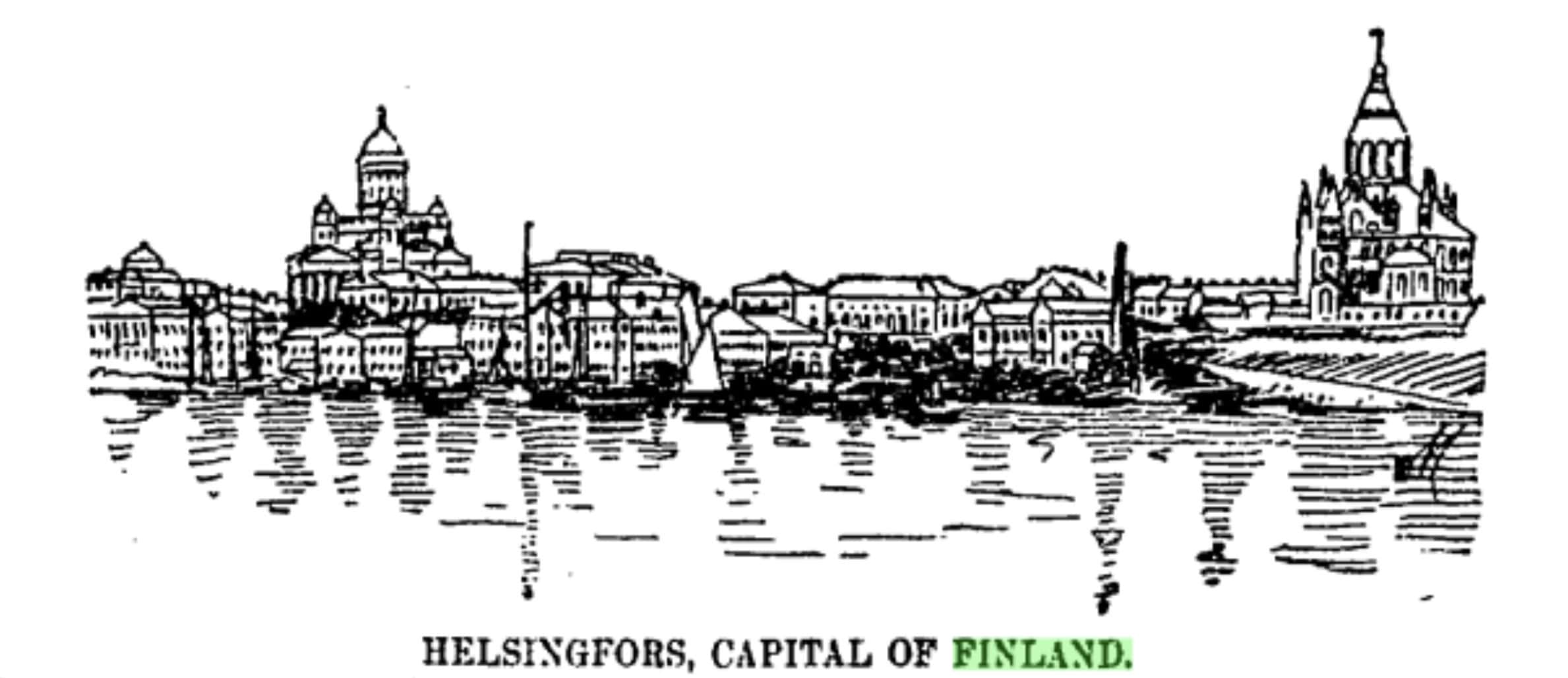Pauli Kettunen, Gale Ambassador at the University of Helsinki
Primary sources are essential to the study and research of history, but most of the time students only read textbooks, journal articles, and other academic material. It is, of course, important to study what has been researched, but with such sources the history has already been written out. To my fortune, I took a course in which an essay had to be based on physical archival sources, so I have been to the National Archives of Finland, to inspect material for it. Browsing propaganda leaflets from the 1940s was fascinating, and I decided I wanted to be able to formulate my own interpretations again, and not only rely on texts written by others.
While taking a Social History course inspiringly titled, ‘Generations, Mobility, and Inequality,’ I realised that I had a great opportunity to use Gale Primary Sources to find something more than journal articles for my essay references. I wanted to focus on the great wave of Finnish emigration destined for the United States during the latter half of the Long Nineteenth Century. Besides a couple of dissertations and books that I had for reference, I searched in the 19th Century US Newspapers archive to find material published during that period.

“Starving Peasants.” Rocky Mountain News, 22 Feb. 1893. Nineteenth Century U.S. Newspapers, http://tinyurl.galegroup.com/tinyurl/8ZMj81
The Finns who migrated to America were numerous – Atchison Globe, a newspaper from Kansas, writes that in 1899 there were already 250,000 Finns in the United States and Canada. Many of them had settled in the states in the area of the Great Lakes, where the forests and the climate reminded them of Finland, as stated by the following excerpt. This view is repeated in several articles in the 19th Century US Newspapers. Most of the articles do not name the author, but the Atchison Globe article mentioned above was written by Olaf Johnson, who might have originally been a Swedish speaking Finn, given his name, the lengthy text, and his good opinion of Finland. In the descriptions of Finnish people, it is often repeated that they are hardworking people from peasant origins – the rural poor were indeed the largest group of emigrants by far, and they were eager to make a better living in the land of their dreams. Many articles commend the compulsory public schooling that meant that Finnish immigrants knew how to read and write.
![Left: “The Finns in Minnesots." Bismarck Tribune [Dakota Territory], 25 May 1889. Nineteenth Century U.S. Newspapers, http://tinyurl.galegroup.com/tinyurl/8bDdf9.](http://blog.gale.cengage.co.uk/wp-content/uploads/2019/01/combined.jpg)
Left: “The Finns in Minnesots.” Bismarck Tribune [Dakota Territory], 25 May 1889. Nineteenth Century U.S. Newspapers.
Right: “Finland’s Legends.” Daily Inter Ocean, 21 Aug. 1892, p. 21. Nineteenth Century U.S. Newspapers, http://tinyurl.galegroup.com/tinyurl/8bF7tX.

“Immigrant Girls.” Boston Daily Advertiser, 7 Aug. 1897, p. 8. Nineteenth Century U.S. Newspapers, http://tinyurl.galegroup.com/tinyurl/8YDkS2.
The United States’ Declaration of Independence is perhaps the earliest political manifesto on human rights, although stating that ‘all men are created equal’ might not suffice in the twenty-first century! While the United States faced its own problems with systematic racial discrimination, the American news in the last decade of the nineteenth century recognised a serious flaw in Finnish society: the awful treatment of ‘paupers’ – orphans, disabled and elderly alike – as they were auctioned to the family that demanded the smallest compensation from the municipality for taking care of them.

I think it can be concluded that Finnish immigrants were a significant target group for the press in the United States, given the large number and variety of news and articles on Finland. Perhaps some of them even found jobs in journalism and thus contributed to spreading news from their homeland. Many newspapers published lengthy texts that summarise facts on Finland’s geography, demography, economy and so on (see, for example, source 1, source 2, source 3). Daily Picayune from New Orleans even dedicated a full page to go over the contents of the Kalevala, the national epic of Finland that had been the subject of a pageant.

Left and Right: “Finland’s Legends.” Daily Inter Ocean, 21 Aug. 1892, p. 21. Nineteenth Century U.S. Newspapers, http://tinyurl.galegroup.com/tinyurl/8bF7tX.
Center: “Finns in the City.” Daily Inter Ocean, 27 Nov. 1892. Nineteenth Century U.S. Newspapers. http://tinyurl.galegroup.com/tinyurl/8bEp51
While reading these articles – and existing academic research – for my coursework, I have been continuously astonished by the extent of transatlantic integration that existed before the First World War. The technological advancements of the era, such as faster steam ships and the trans-Atlantic telegraph cable, made it more possible than ever for Finns to migrate in search of a better lifestyle and to spread news across the ocean and into the United States. Many of them returned home; some with their pockets full of money earned in America and some of the less fortunate with only their possessions. And many of them stayed, making the United States their new homeland, while remembering the far-away country in Northern Europe from which they originated. Further adding to the mix is the story of Dr. Beckman who, as reported in ‘Just from Finland’, travelled back to his home country after 30 years to study ‘a post-graduate course’ at Helsinki, the same university that I now attend, and then travelled back to Oregon after nine months. The time delay of travel was of course longer with ocean liners than with airplanes, but the Long Nineteenth Century truly deserves title of the ‘first era of globalisation’.
![” Just from Finland." Portland Oregonian [Oregon Territory], 2 Aug. 1898, p. 8. Nineteenth Century U.S. Newspapers, Accessed 11 Dec. 2018](http://blog.gale.cengage.co.uk/wp-content/uploads/2019/01/Just-From-Finland-1024x583.png)
[1] Kero, Reino, 1974: Table 12. “Migration from Finland to North America in the Years between the United States Civil War and the First World War”, University of Turku.


